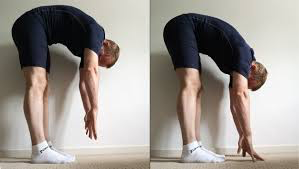
Updated March 2020
If you're recovering from an injury, you may have considered dry needling or IMS (intramuscular stimulation). However, if you are still on the fence about whether or not it is the right treatment for you on your journey to recovery, these 5 benefits of dry needling may help you decide. Benefits of Dry Needling

Promotes Blood Flow. Trigger points cause tightness in muscles which can restrict blood flow and therefore oxygen delivery. This lack of oxygen can contribute to pain in the affected area. By using dry needling to deactivate trigger points in the muscle, we can reduce the barrier to blood flow and improve oxygenation.
Promotes Healing. By creating tiny injuries in a dysfunctional muscle with the use of a needle, the body responds with an inflammatory response in the area. This is a natural healing process which stimulates healing through collagen and protein formation and can help to restore a muscle’s normal function.
Reduces Pain. This can take many forms. In many cases, the deactivation of trigger points alone can reduce pain locally; however, by improving muscle extensibility this can, in some cases, take pressure off joints to reduce joint pain, or nerves to reduce radicular pain. Additionally, chemical changes within the muscle and associated nerves can block or influence the transmission of pain messages to the brain.
Improves Muscle Extensibility and Contractibility. Once again, the deactivation of trigger points is mostly to thank here! By releasing taut bands found within muscle, muscled spasms can be decreased and increased range of motion can be achieved. Improved joint mechanics and using the “twitch response” to our advantage can allow for improved recruitment and activation of appropriate muscles.
Provides a “Window” of Opportunity. This is where the “function” in “Functional Dry Needling” comes into play. Dry needling can be like hitting the RESET button for our muscles and nervous system; and, can allow us a period in which we can re-learn or re-establish more appropriate movement or muscle recruitment patterns. It is important to not simply rely on dry needling as a stand alone treatment, but instead pair it with other physiotherapy techniques as well as appropriate home exercises to help reinforce these new ways to move. By taking advantage of this window of opportunity, we can not only use dry needling as a way to treat pain and dysfunction, but also as a preventative measure!
If you think dry needling may be the treatment for you, we can help! Book an appointment with us today.
Jayme Gordon graduated from the University of British Columbia with a Master's degree in Physical Therapy. Prior to this she completed a Bachelor's of Science Kinesiology degree at the University of Victoria. She is a member of the Canadian Physiotherapy Association as well as the Physiotherapy Association of BC. Jayme has a passion for working with a diverse patient population ranging from athletes to community dwelling seniors. Book with Jayme today.
.png)


